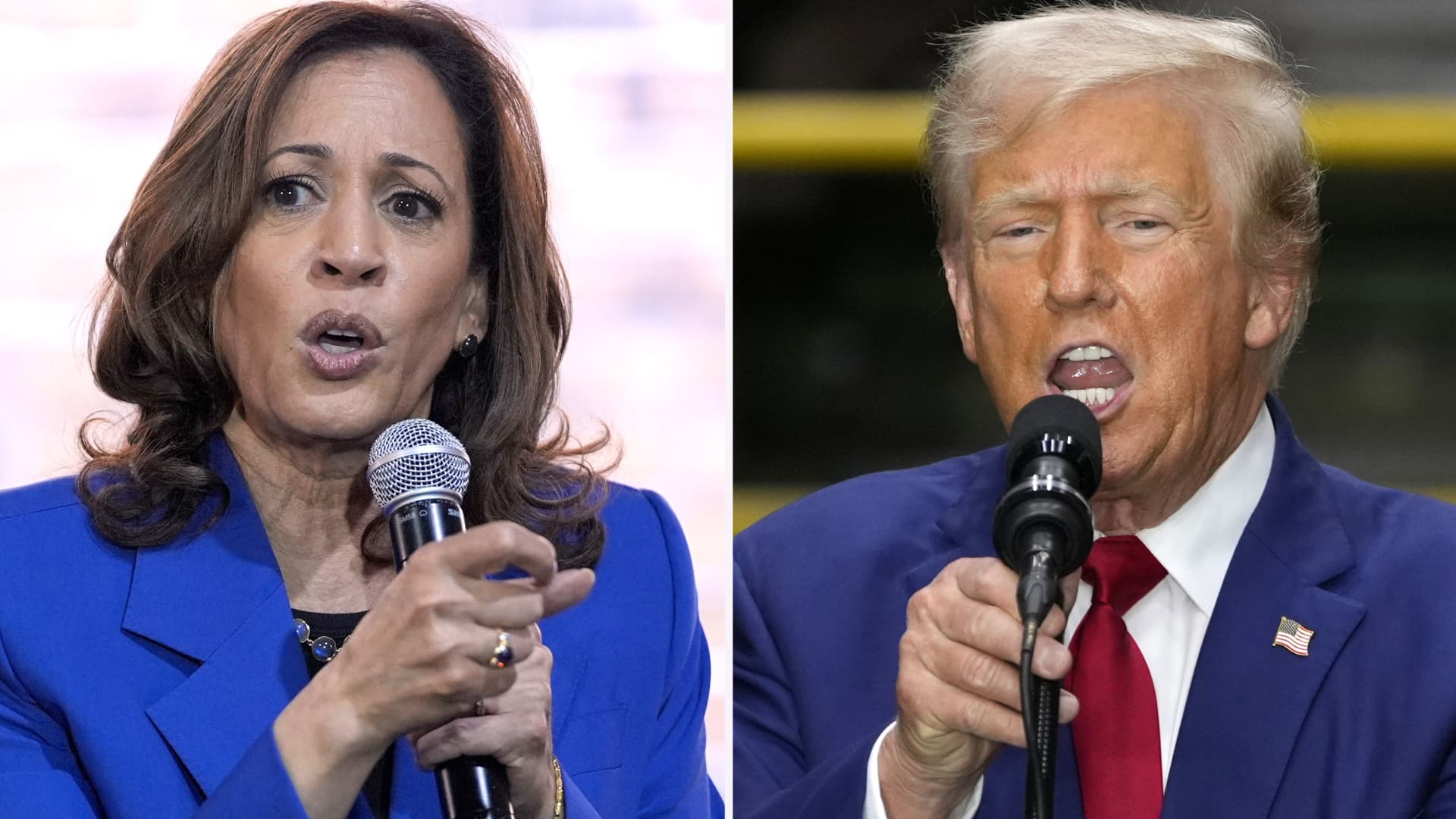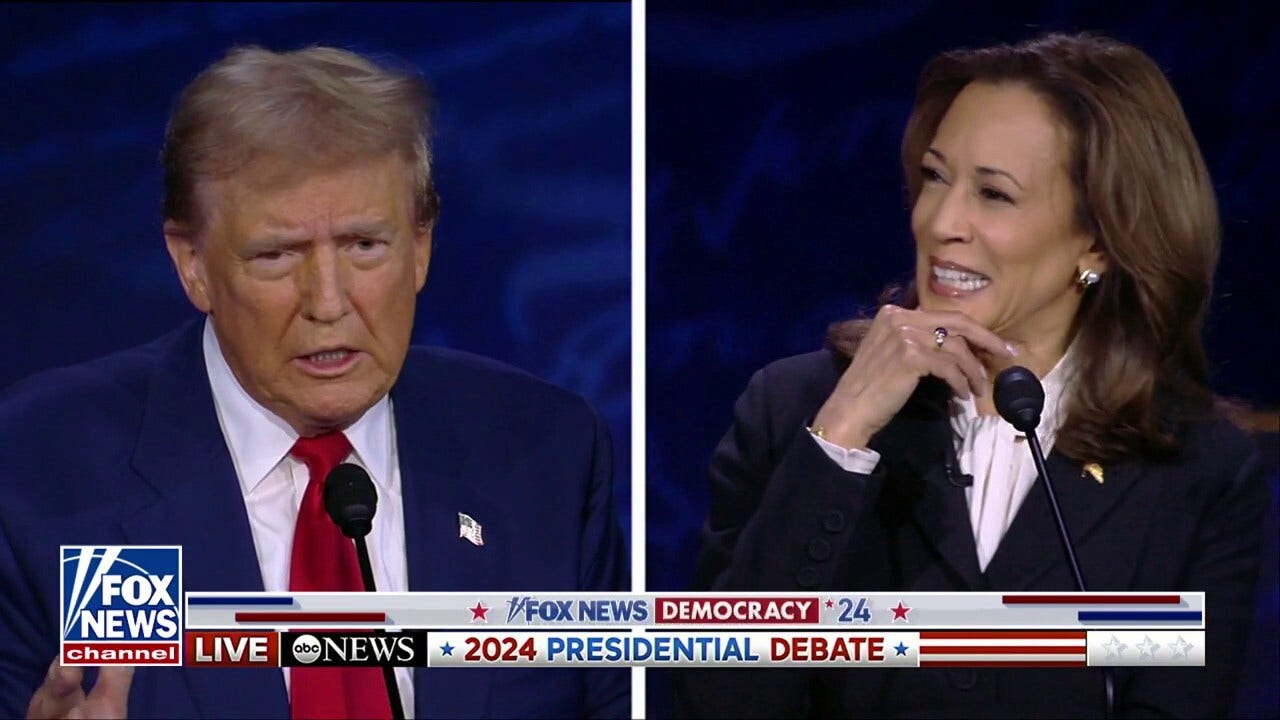Democratic presidential nominee and Vice President Kamala Harris, left, and Republican presidential nominee and former President Donald Trump.
AP
A gauge of economic misery that has a strong track record of predicting elections is tilting toward a Kamala Harris victory — but it appears tight entering the race’s final stretch.
The “misery index” is the addition of the unemployment rate to the annualized inflation rate in the U.S. It has correctly predicted 15 of the past 16 races for the White House, including every presidential matchup since 1980, according to an analysis by research firm Strategas.
This index now sits at 7.02, below the level that Strategas has found would be consistent with the incumbent party losing the election. That number accounts for the modest decline of the jobless rate for August to 4.2%, as seen in Friday’s jobs report.
Below a 7.353 level is needed in October for the incumbent party — in this case, the Harris-led Democrats — to come out on top, according to Strategas. The firm found this level through exclusive analysis of where the misery index would need to sit for the party currently in office to retain power, based on history.
In other words, a reading below that threshold essentially means voters are not “miserable” enough when it comes to the economy to boot the sitting party.
Beyond the unemployment rate, falling gasoline prices are also helping keep economic woes contained enough to aid Democrats, according to Daniel Clifton, Strategas’ head of policy research. Still, he called the race “extremely close” in a Monday note to clients.
Clifton’s commentary comes ahead of Tuesday night’s debate between Harris and Republican Donald Trump. The event, hosted in Philadelphia by ABC News, is scheduled to begin at 9 p.m. ET.
“The stakes are as high as we have seen them going into a debate given how tight this race is,” he said.
Misery index followers will get their next update on Wednesday, with August’s consumer price index reading due at 8:30 a.m. ET. Economists polled by Dow Jones expect the gauge, which tracks price changes in a broad basket of goods and services, to be higher by 2.6% compared to the same month a year prior.
That would mark a decline from the 2.9% year-over-year rate recorded in July. It would also reflect a broader downtrend in annual inflation from the runaway levels seen early during the Covid-19 pandemic. The Federal Reserve, which sets U.S. monetary policy, has a goal of 2% for yearly price growth.
In turn, the misery index has fallen significantly in recent years as the pace of annualized inflation cooled. Notably, the misery reading was above the 7.353 threshold just last year.
But Harris could now face challenges if concerns around cooling in the labor market foreshadow a jump in the unemployment rate. While August’s jobless rate marked a slight monthly decline, market participants were rattled on Friday as payrolls expanded by less than economists predicted during the month.















